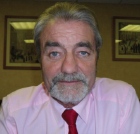In case of fire

Ductwork plays the important role of moving air through a building, — but it can also spread fire if fire dampers do not operate if they are needed. Dermott Quinn provides the answers to some frequently asked questions.
Why are fire dampers so vital for fire protection?
Ducting provides the perfect conduit for fires to spread rapidly through buildings — and into neighbouring buildings. Heat build-up inside ducts can cause combustible materials nearby, such as roof joists, to ignite. Dust, debris and drafts within ductwork will also exacerbate the spread of fire, leading to significantly higher insurance claims and presenting fire fighters with a more difficult task than needs be. Fire dampers are designed to drop in the event of a fire, effectively closing off the duct and containing the fire’s spread within the ducting system.
Do all ducting systems have to have fire dampers fitted?
All mechanical ventilation systems should have fire dampers installed as stated in Building Regulation 38. For healthcare facilities, the Department of Health’s Health Technical Memorandum [HTM] 03-01 Part A specifies requirements for fitting of fire dampers.
How often should fire dampers be tested?
Fire Damper Regulation BS9999 states that ‘all fire dampers should be tested by a competent person at regular intervals not exceeding two years, and to be repaired or replaced immediately if found to be faulty. Spring-operated fire dampers should be tested annually, and fire dampers situated in dust-laden and similar atmospheres should be tested much more frequently, at periods suited to the degree of pollution.’
In addition, periodic maintenance of any smoke-detection system used to operate fire dampers is required to determine whether detection occurs at the appropriate design smoke density. Any faulty smoke-detection systems should be either repaired or replaced immediately. In the case of healthcare establishments HTM 03-01 Part B stipulates annual maintenance of all ventilation plant.
It is also essential that fire dampers are tested immediately after installation in a new building.
What are the main considerations when installing fire dampers to ensure efficient testing and maintenance can be carried out?

Access is the main issue; operators must have full access to dampers in order to test and maintain them. Limited space in ceiling voids contributes to access problems. In addition, a lack of understanding of the testing process leads to access doors that are too small being installed or not being installed close enough to the damper. It is not unusual to find a damper that has obviously never been inspected or tested at all, as there is no access door installed.
What are the common problems associated with efficient functioning of fire dampers?
Dampers can become jammed, corroded, or suffer collapsed blades. We have also found dampers that have been deliberately jammed open and even some incorrectly installed upside down.
What are the implications of not testing and maintaining fire dampers to required standards?
The Fire Safety Order requires that ‘a person who has some level of control in the premises must take reasonable steps to reduce the risk from fire’. If a fire occurs and the responsible person cannot demonstrate that they have been executing their duty correctly, they can be liable for hefty fines — or in the case of fatality, possible criminal prosecution. In addition, the local fire officer has authority to close any premises if they suspect the correct procedures have not been followed.
Insurers are also becoming increasingly concerned with fire prevention. Some insurers are including duct cleaning and maintenance directions as part of their policy requirements; failure to comply with these requirements could void buildings insurance. For the peace of mind of property owners and managers, fire-damper testing should be done by a qualified specialist that can provide comprehensive reports detailing the performance of each fire damper and recommending and implementing any necessary remedial work.
Dermott Quinn is managing director of duct-maintenance specialist Ductbusters.







